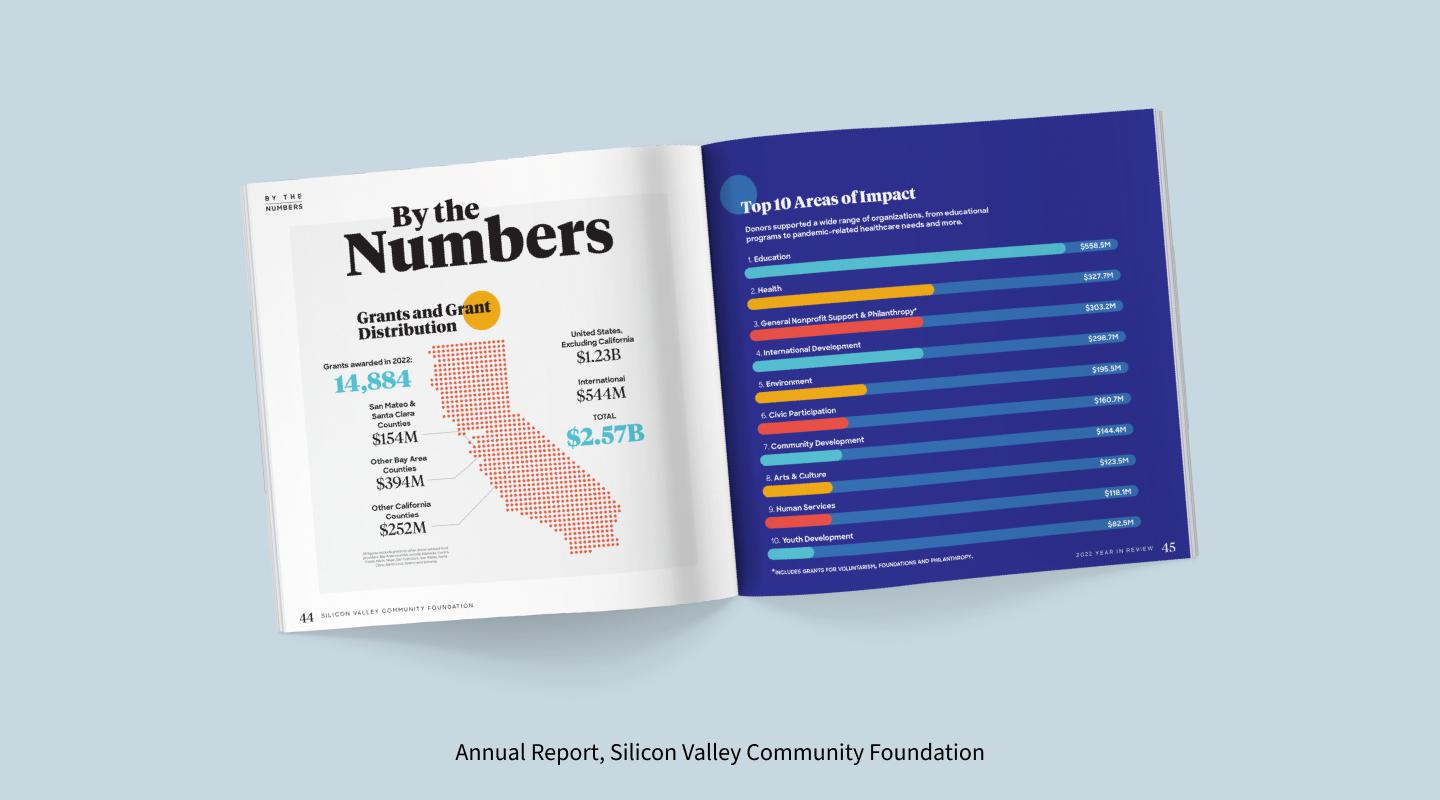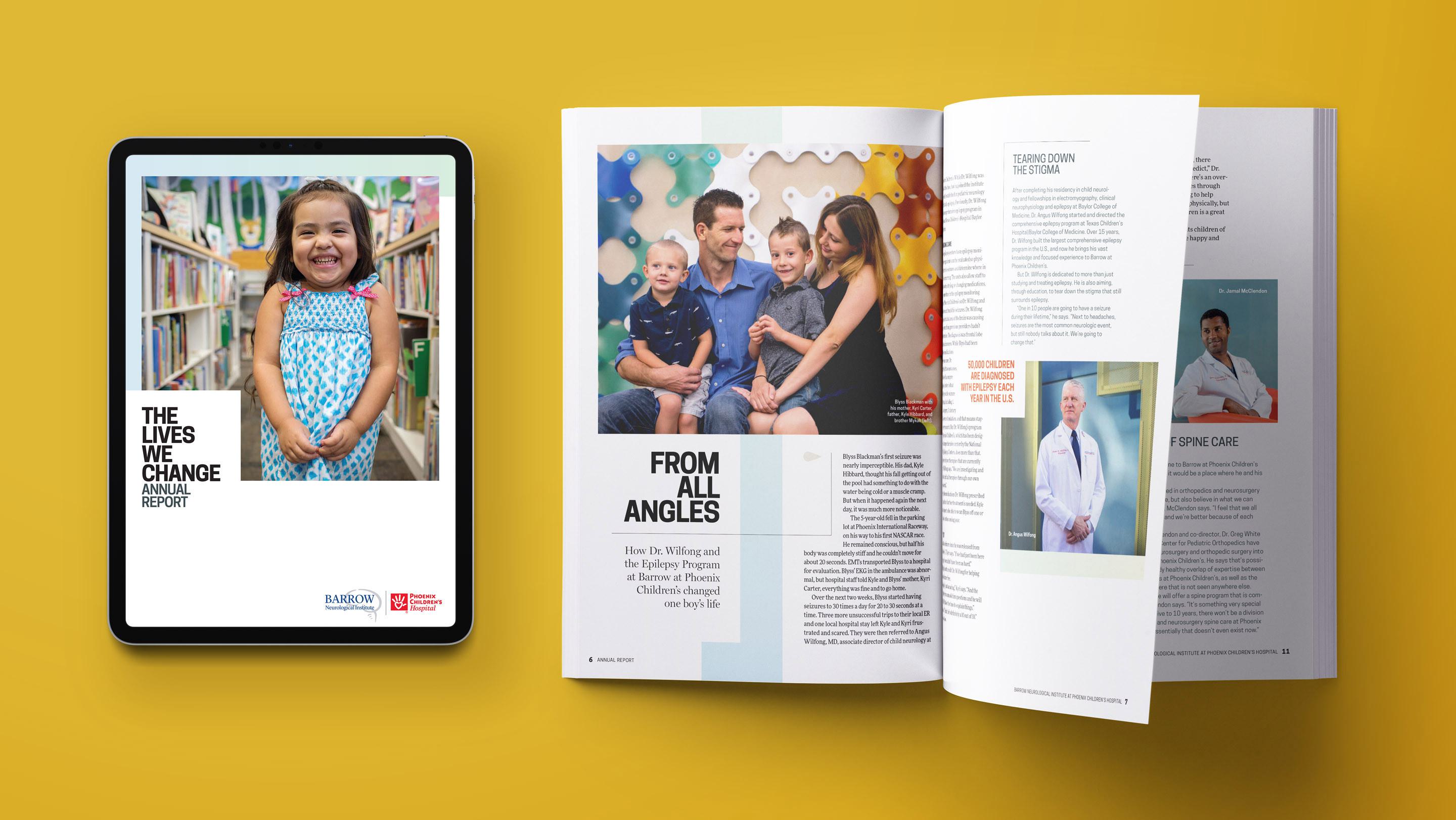Your Annual Report Deadline Is Approaching. Start Smart, Now!
Get ahead on your annual report by implementing smart strategies now, from engaging leadership and stakeholders to choosing the right format.

Progress Report | Penn Medicine & Abramson Cancer Center

Fund Annual Report | American Society of Landscape Architects

Annual Report | Case Comprehensive Cancer Center
By Jeff Ficker
As fall emerges and the end of the year appears on the horizon, the looming task of crafting your annual report inches closer. Rather than dreading this yearly obligation, why not embrace it as an opportunity to showcase your organization’s achievements, mission and vision? By starting early and approaching the project with a strategic mindset, you can create an annual report that not only fulfills your requirements but also inspires your audience.
1. Review Other Annual Reports for Ideas and Inspiration
Before you begin drafting your report, take the time to review successful annual reports from other organizations. This exercise can provide valuable insights into effective presentation styles, content organization and design elements. Look at both similar and different industries to gather a wide range of ideas.
What to Look for in Other Annual Reports:
- Design and Layout: How is the information structured? Are there innovative design elements that catch your eye?
- Content: What types of stories and data are highlighted? How is the narrative constructed?
- Tone and Style: Pay attention to the language and tone. Is it formal, academic or more casual?
- Packaging: Consider various content formats such as timelines, sidebars, roundups and Q&As.
- Engagement Tactics: Note any interactive features, calls to action or unique elements that enhance reader engagement.
- Naming: Is the term “Progress Report” or “Donor Impact Report” a better fit?

2. Strategize to Secure Stakeholder Buy-In and Guide Production
To ensure your annual report is a success, start with a solid strategy that includes leadership and stakeholder buy-in. This strategy should guide the entire production process, from initial planning to final distribution.
Steps for Annual Report Strategic Planning:
- Set Clear Objectives: Define the primary goals of your report. What do you want to achieve? Who is your target audience?
- Engage Stakeholders Early: Involve key stakeholders from the beginning to gather input and build support.
- Develop a Timeline: Create a realistic timeline that includes milestones for content creation, design, review and production. Plan for multiple review stages to ensure accuracy and quality.
- Establish a Budget: Determine the financial resources available for the report’s production, including content creation, design, printing and/or development.
- Define Scope and Ambition: Decide how comprehensive the report should be in terms of length and content to meet your objectives without overwhelming the audience, straining your budget or compromising your timelines

3. Select a Format: Print, Digital — or Both
Deciding between a print or digital annual report, or even a combination of both, is a crucial step in the planning process. Each format has its own set of advantages.
Pros of Print Annual Reports:
- Tangibility: A physical report can make a lasting impression with big, bold visuals — and can be kept as a reference.
- Professionalism: Print is often perceived as more formal and professional.
- Accessibility: Not all stakeholders may have easy access to digital reports, making print a valuable option.
Pros of Digital Annual Reports:
- Cost-Effective: Digital reports can be more affordable, especially for large distributions.
- Interactive Elements: Digital formats allow for multimedia, links to additional content and interactive features that enhance reader engagement.
- Eco-Friendly: A digital approach reduces paper waste and is environmentally friendly.
- Shareability: Digital reports can be easily shared via email, social media and websites.
Pros of Doing Both:
- Broad Reach: Combining both formats ensures that you can cater to different preferences and accessibility needs.
- Comprehensive Engagement: Use print for formal presentations and digital for broader dissemination and interactive engagement.

4. Create a Report That Captivates Your Audience
The key to a successful annual report lies in creating a report that people actually want to read. Gone are the days when these documents were mere compilations of dry statistics and financial data. Today’s readers expect a narrative that is compelling, visually appealing and informative.
Tips for an Engaging Annual Report:
- Tell a Story: Weave a narrative that highlights your organization’s journey over the past year. Use personal anecdotes, success stories and testimonials to humanize your data.
- Use Visuals: Incorporate infographics, charts, and images to break up the text and make complex information more digestible.
- Keep it Concise: Focus on the most important information and present it clearly. Avoid jargon and overly technical language.
- Interactive Elements: If you’re opting for a digital format, consider adding interactive elements like videos, hyperlinks and clickable charts to enhance engagement.
By starting smart and approaching your annual report with a strategic mindset, you can transform this yearly project into a powerful tool for communication, engagement and growth.
—
Key Takeaways
- Start early. Begin planning several months in advance to avoid last-minute rushes and ensure a high-quality final product.
- Be strategic. A well-thought-out strategy with stakeholder involvement is crucial for success.
- Engage your audience. Focus on creating a report that is not only informative but also engaging and visually appealing.
- Choose the right format. Consider the pros and cons of print and digital formats to best meet your audience’s needs.
- Learn from others. Reviewing other successful reports can provide valuable inspiration and guidance.
Ready to Create an Annual Report That Stands Out?
Let us help you write and design an engaging, impactful annual report that your audience will love. Contact us today to get started!

